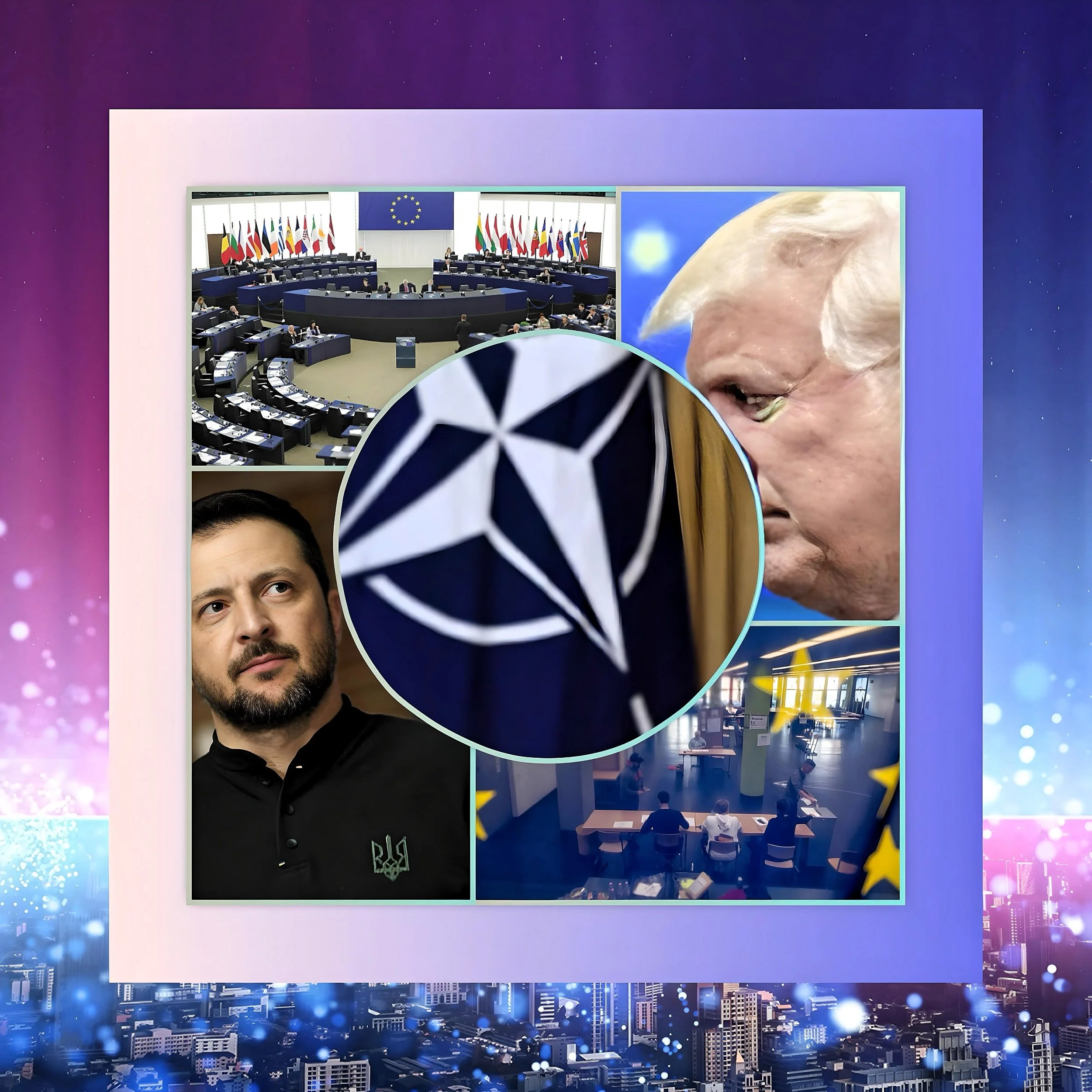Europe’s Strategic Response to Trump’s Policy Shifts: A Comprehensive Analysis
Introduction
The resurgence of Donald Trump’s presidency has ushered in a period of profound geopolitical recalibration for Europe.
With shifting U.S. priorities—from trade protectionism to wavering support for Ukraine—European leaders have embarked on a multifaceted strategy to safeguard the continent’s economic, security, and diplomatic interests.
FAF examines Europe’s latest initiatives, including accelerated defense investments, retaliatory trade measures, strengthened alliances with non-EU partners, and diplomatic maneuvers to counterbalance U.S. disengagement.
This analysis synthesizes policy announcements, economic countermeasures, and geopolitical alignments to reveal how Europe is navigating a world in which traditional transatlantic certainties have eroded.
Reasserting Strategic Autonomy Through Defense Modernization
The $840 Billion “ReArm Europe” Initiative
Central to Europe’s response is European Commission President Ursula von der Leyen’s $840 billion defense package, unveiled on March 4, 2025.
This initiative addresses critical vulnerabilities exposed by Trump’s suspension of military aid to Ukraine and his skepticism toward NATO’s collective defense framework. The plan includes:
A $150 billion EU Defense Fund to subsidize joint arms procurement, prioritizing air defense systems, artillery, and drone technologies.
Relaxed debt rules allow member states to exceed EU deficit limits for defense expenditures, potentially unlocking $680 billion in national budgets over four years.
Accelerated production timelines for key platforms like the Franco-German Future Combat Air System (FCAS) and the European Main Battle Tank, with binding targets to replace Soviet-era equipment in Eastern Europe by 2027.
This historic investment departs from decades of underfunding. EU-wide defense spending is projected to reach 2.5% of GDP by 2026, surpassing NATO’s long-unmet target.
However, challenges persist in harmonizing procurement across 27 national systems, as evidenced by ongoing disputes over the distribution of contracts for ammunition production.
Trade Countermeasures and the Quest for Economic Sovereignty
Retaliatory Tariffs and WTO Challenges
In response to Trump’s 25% tariffs on EU steel, aluminum, and automotive imports announced February 27, 2025, the European Commission has compiled a $45 billion retaliation list targeting U.S. agricultural exports, pharmaceuticals, and liquefied natural gas (LNG). Key components include:
50% tariffs on bourbon whiskey and peanut butter, strategically chosen to pressure Republican strongholds in Kentucky and Georgia.
The suspension of Boeing certifications under the EU Aviation Safety Agency jeopardized $12 billion in annual aircraft sales.
Accelerated antitrust investigations into Meta and Apple, leveraging the Digital Markets Act to impose fines of up to 20% of global revenue.
Simultaneously, Brussels has initiated WTO dispute proceedings against U.S. tariffs, arguing they violate Article II:1(b) of the General Agreement on Tariffs and Trade (GATT) by exceeding bound rates.
While the EU won a similar case against Trump’s 2018 steel tariffs, the current administration’s disregard for WTO rulings and its threat to withdraw from the organization render this a largely symbolic gesture.
Diversifying Trade Partnerships
Recognizing the limitations of transatlantic engagement, Europe is aggressively pursuing new free trade agreements (FTAs):
India-EU FTA
Finalized on March 1, 2025, this pact eliminates tariffs on 94% of EU industrial exports while securing Indian commitments on geographical indications for Prosecco and Roquefort.
Mercosur Revival
Amendments to the stalled South American deal include strengthened sustainability clauses, with Brazil agreeing to reduce Amazon deforestation by 50% in exchange for €20 billion in green investment.
ASEAN Outreach
The EU is negotiating a digital trade framework with Indonesia and Vietnam to counter Chinese dominance in rare earth mineral processing.
Ukraine Policy: Bridging the U.S. Leadership Vacuum
The European Kyiv Security Compact
With Trump conditioning further U.S. aid on Ukraine and accepting Russian-territory concessions, the EU has assumed primary responsibility for sustaining Kyiv’s war effort. Key measures include:
€50 billion Ukraine Facility
This four-year package, Approved on February 15, 2025, provides direct budget support ($39 billion) and military assistance ($11 billion), funded through joint EU borrowing.
Joint EU-Ukraine Defense Industry Forum
Launched on March 5, this platform co-locates Rheinmetall and Baykar production facilities in western Ukraine. It aims to produce 1 million artillery shells annually by 2026.
Security Guarantees
France and Germany signed bilateral agreements with Kyiv on February 28, pledging immediate military intervention if Russia uses nuclear weapons—a deliberate contrast to Trump’s ambiguous NATO commitments.
Diplomatic Isolation of Russia
Despite Trump’s openness to lifting sanctions, the EU has expanded restrictions through its 12th sanctions package (March 2025):
Diamond Import Ban
Targeting Alrosa’s $4.5 billion annual exports, enforced via blockchain tracking in Antwerp.
Secondary Sanctions
Penalizing third-country banks processing Russian energy payments, with exemptions for Hungary’s MKB Bank to maintain unity.
Asset Confiscation
A proposed legal framework to seize $300 billion in frozen Russian central bank assets for Ukraine’s reconstruction.
Energy Realignment and Climate Policy Adjustments
Reducing Reliance on U.S. LNG
Trump’s threats to restrict LNG exports have accelerated Europe’s energy diversification strategy
Azeri Gas Expansion
The Southern Gas Corridor’s capacity will increase to 40 cm/year by 2027, backed by €3 billion in European Investment Bank loans.
African Solar Imports
A new €10 billion Mediterranean undersea cable will transmit 5 GW of solar power from Tunisia by 2026, offsetting reduced U.S. energy cooperation.
Regulatory Concessions to Avert Trade Wars
To de-escalate tensions, the EU has offered limited compromises:
Methane Regulation Delay
Postponing strict emissions monitoring for LNG imports until 2030, accommodating U.S. producers.
CBAM Exemptions
Temporarily excluding aluminum and fertilizers from carbon border taxes until 2027.
Institutional Reforms for Cohesive Decision-Making
Qualified Majority Voting (QMV) Expansion
Breaking from unanimity requirements, the EU has implemented QMV for:
Sanctions Policy
Overriding Hungarian vetoes on Russia's measures through an “emergency mechanism” activated in February 2025.
Trade Negotiations
This will allow the Commission to fast-track FTA ratifications and reduce leverage for national parliaments.
The European Defense Union Framework
Proposed by France and Germany on March 3, 2025, this treaty would:
Create a 5,000-strong EU Rapid Deployment Force by 2026, headquartered in Strasbourg.
Establish a Joint Intelligence Cell pooling signals intelligence from France’s DGSE and Germany’s BND.
Conclusion
Navigating the New World Disorder
Europe’s response to Trump’s disruptive policies represents a historic assertion of strategic autonomy and a recognition of painful constraints.
While the $840 billion defense initiative and Kyiv Security Compact demonstrate unprecedented resolve, persistent burdens-sharing divisions (e.g., Eastern Europe’s demands for permanent U.S. bases versus France’s push for EU-only structures) reveal lingering vulnerabilities.
The coming months will test Europe’s ability to:
Maintain transatlantic economic ties while resisting U.S. protectionism, particularly in critical technology sectors like semiconductors.
Anchor Ukraine’s Western integration through NATO-adjacent security guarantees and reconstruction financing.
Prevent fragmentation as Trump courts individual member states like Hungary and Italy with bilateral energy deals.
Ultimately, Europe’s multi-track strategy—combining military strengthening, trade diversification, and institutional innovation—offers a roadmap for middle powers navigating an era of great power rivalry.
The success of this approach will depend on sustaining political will amid potential U.S. escalation and the ever-present risk of continental discord.






